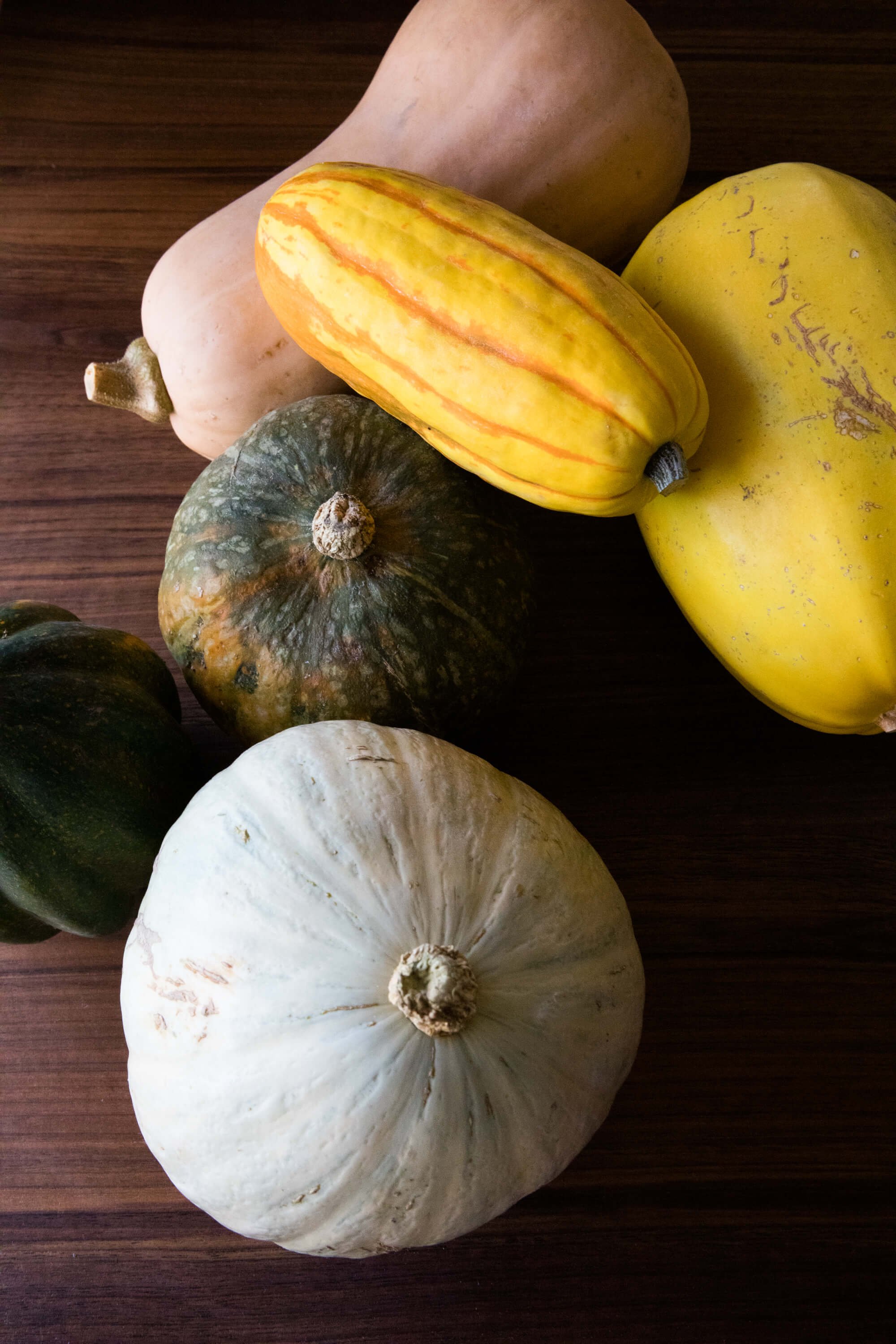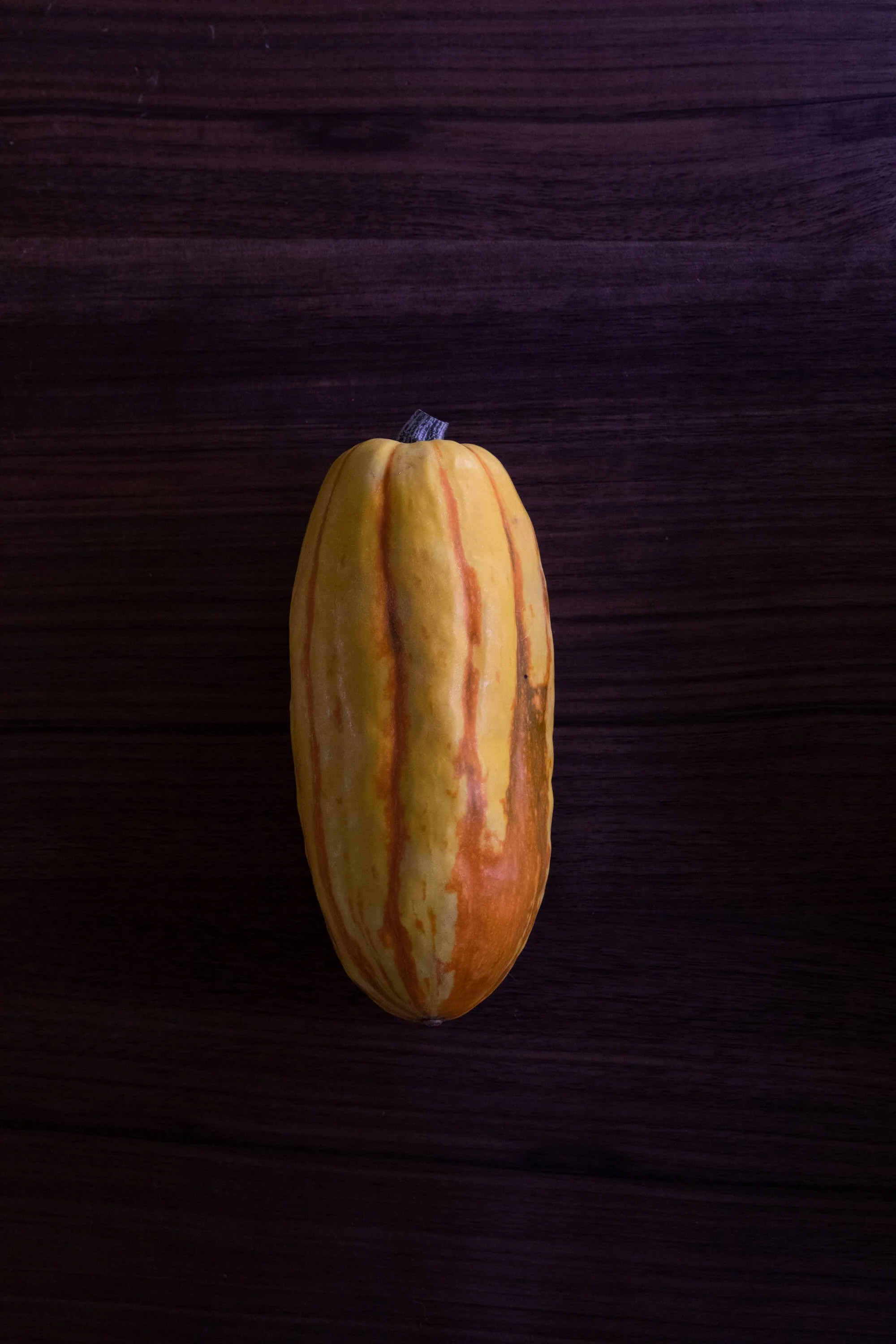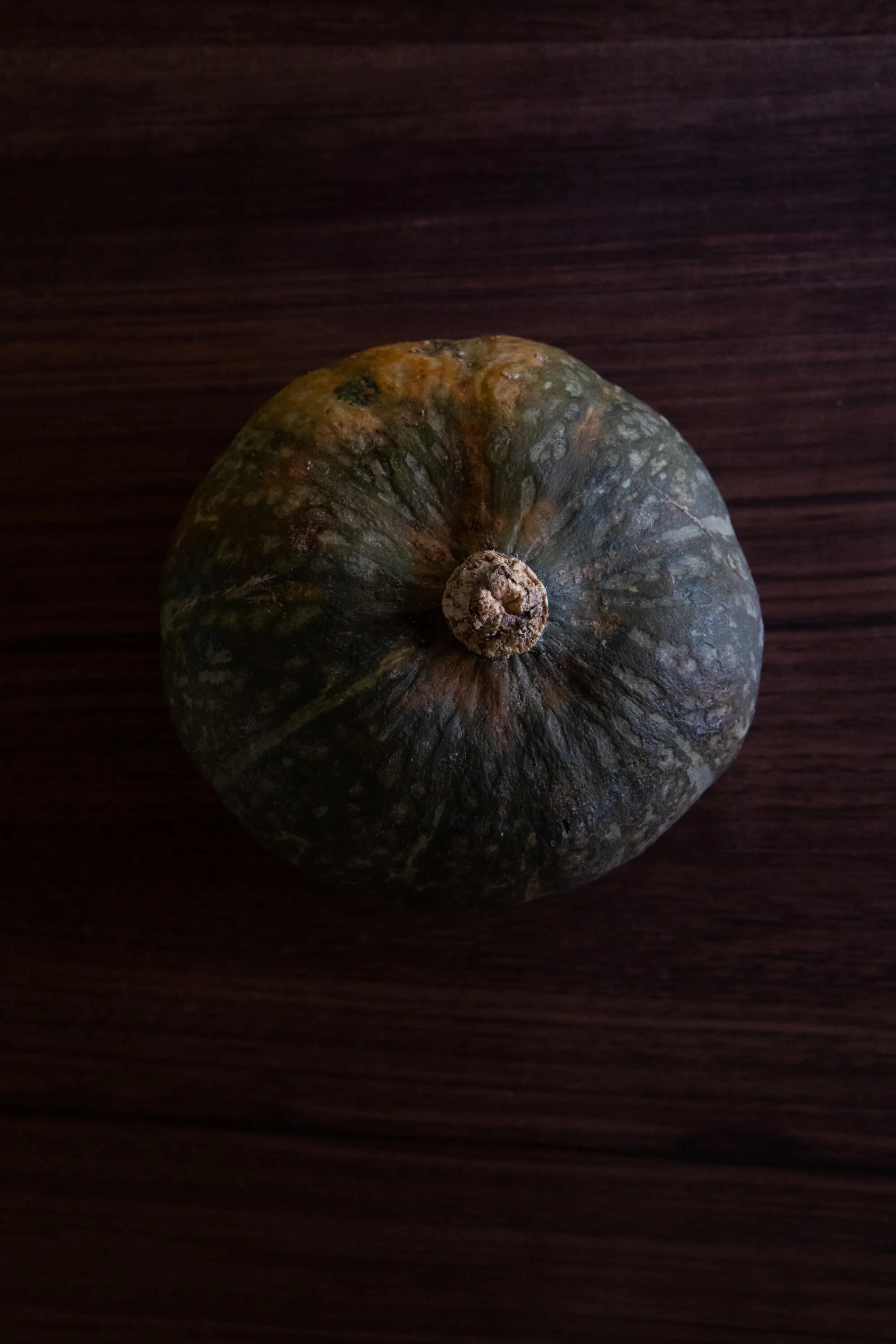Winter Squash Round Up
How many times have you been in the grocery store or farmer’s market and picked up an unusually shaped winter squash with a rock hard outer layer, only to wonder, “how on earth do I cook this”? Even as a long time cook, there have been moments where I have felt intimated and simply walked away, only to move onto something more familiar and seemingly simple, like a garnet yam. It’s confusing, can I eat the skin on this one or not? Can I stuff this one or put it into a stew or soup? Can I put it into a pie? Not all squashes taste alike or cook alike. Like all things in nature, they have variety. Over the years I become more confidant and so, would like to dispel some of the mystery of the Cucurbita maxima, (latin name for the winter squash family). The winter squash in our culture connotes the fall season, many of them brown, dark green, orange and golden in color, an ode to colors of the season and the upcoming holidays. Generally speaking winter squash are sturdy and robust in nature and thus have a long shelf life (about 4-6 weeks, some even more) if stored in a cool dry place, like a larder or pantry. And although winter squash abound October-January, they are actually harvested in the summer time, so really their shelf life is even longer from the time of harvest. In terms of health benefits, most are high in alpha and beta-carotene both of which convert to Vitamin A, and a good source of Vitamin C. They also contain polysaccharides which have been shown to help modulate and/or control blood sugar. Historically speaking, the earliest American natives honored the Three Sisters which were squash, beans and corn, the trio of food which were relied upon by ancient cultures. In modern times, these hard shelled beauties grace our holiday tables providing us with warmth and nourishment as well. Let’s take a look at some of varieties I will be cooking with this season.
P.S. I found this quick little article on removing winter squash skin, 2 Hacks for Peeling Winter Squash .
Blue Ballet Squash
A member of the Hubbard squash family, Blue Ballet has a pastel grayish-blue exterior hard shell (pairing knives beware), similar to that of a Robin’s egg, an orange colored flesh, and a rich sweet pumpkin-like flavor. It makes a great substitute in a pumpkin pie. Try it in lieu of canned pumpkin pie puree in my Paleo Pumpkin Bars (peel it, steam and puree it). The skin can be quite bumpy and is generally discarded (compost if possible). The flesh is smooth and somewhat dry in texture. It also tastes great in soups and stews. The Hubbard squash is rich in Vitamin A (beta-carotene), critical for healthy vision and fundamental for cardiovascular and lung health.
Acorn
The acorn squash comes in green, roughly the size of a baseball except that it looks well, quite like an acorn. I often find it in dark green with orange accents or orange with green accents, there are a few varieties. The skin can be eaten, it is thin and once baked is hard to decipher from the interior flesh of the squash. It requires no peeling and when eaten, will add extra nutritional content. They are wonderful sliced in half, deseeded, baked and then stuffed with say, a mushroom stuffing and baked again or sliced and roasted. The taste is mild and nutty. It too is high in beta-carotene ,folate (folic acid) and magnesium.
Spaghetti Squash
Is shaped and roughly the size of a small football (American football) and ranging from white to bright orange in color. The exterior shell is not to be eaten, when cooked becomes a hard shell. It’s flesh when raw is similar to that of a pumpkin and filled with seeds but after it is cooked the flesh inside when pulled away from the shell has a stringy spaghetti-like consistency. The best way to cook spaghetti is squash is to cut it in half, lengthwise, scoop out the seeds, and bake it cut size down. Serve as you would spaghetti, it has a mild, neutral taste and therefore goes well with pesto, pomodoro sauce or sprinkled with olive oil, a crack or two of fresh pepper and salt to taste. It is low in calories and low in carbohydrates compared to its’ gluten counterpart.
Butternut Squash
The butternut squash, is the hybridized baby of the gooseneck squash and the Hubbard squash. It is probably one of the most common and popular squashes as well as versatile. It’s skin a tan color and manageably peeled off with a peeler has a deep orange flesh much like that of a pumpkin and tastes similar too, except milder. It can be seen in ravioli, soups, stews, roasted, sautéed, hidden in mac and cheese (yes, my kids still don’t know we put it in there to get more nutrition in). And it baked into muffins, bread and pies. It is a good source of vitamin C, magnesium, potassium, fiber and surprise, beta carotene. Butternut squash can store up to 6 months. I love it cut up and roasted and drizzled with tahini.
Delicata Squash
Delicata is variegated bright orange or green and yellow and has the shape of a small torpedo or a large peanut. It like the acorn squash, can be cut in half (lengthwise), seeds scooped out, baked, cut side down, stuffed and rebaked. It can also be cut into little semi-circles and roasted and made into a wonderful holiday side dish, like this one here, a roasted delicata squash with feta and pomegranate seeds. Like the acorn squash as well, it is absolutely fine to eat the skin. The flesh is tender, nutty and mild in taste. It is a good source of potassium and fiber. And unlike many of the other squashes, it is not as rich in beta-carotene.
Kabocha Squash
Often dark green in color, the Japanese Kabocha squash, has a thick, bumpy outer shell but can be eaten when cooked well. It is commonly used in soups and a popular varietal the Kuri is bright orange in color both inside and out. It has an incredibly sweet flavor, and when roasted or steamed a similar texture to that of a sweet potato and butternut squash. It is super rich in beta-carotene due to it’s vibrant orange color and a good source of potassium, vitamin c and iron. It is used often in Japanese cuisine.
Experiment this holiday season with the various winter squashes. Bring a pop of color and nutrition to your table. Keep checking back this season for more squash recipes coming to you soon.
Addendum
Many of you know I have been a proponent of Dr. Gundry’s low lectin way of eating. Lectins can cause inflammation in the body as well as contribute to a host of other potential symptoms and ailments. The squash family, all of them are shown to have lectins. If you are choosing to modulate your lectin consumption be sure to deseed and peel all of your squash, higher levels of lectins are in the skin and seeds of vegetables and fruit. And pressure cooking lectin culprits has also shown in lowering lectins. I have begun incorporating and cooking with a wider variety of produce as I try to operate from my intuition and how my body feels and have found variety to be a key player in my health. I would encourage you to do the same unless your health care provider says otherwise. I have been enjoying the winter squash family without issue over the past two years.







